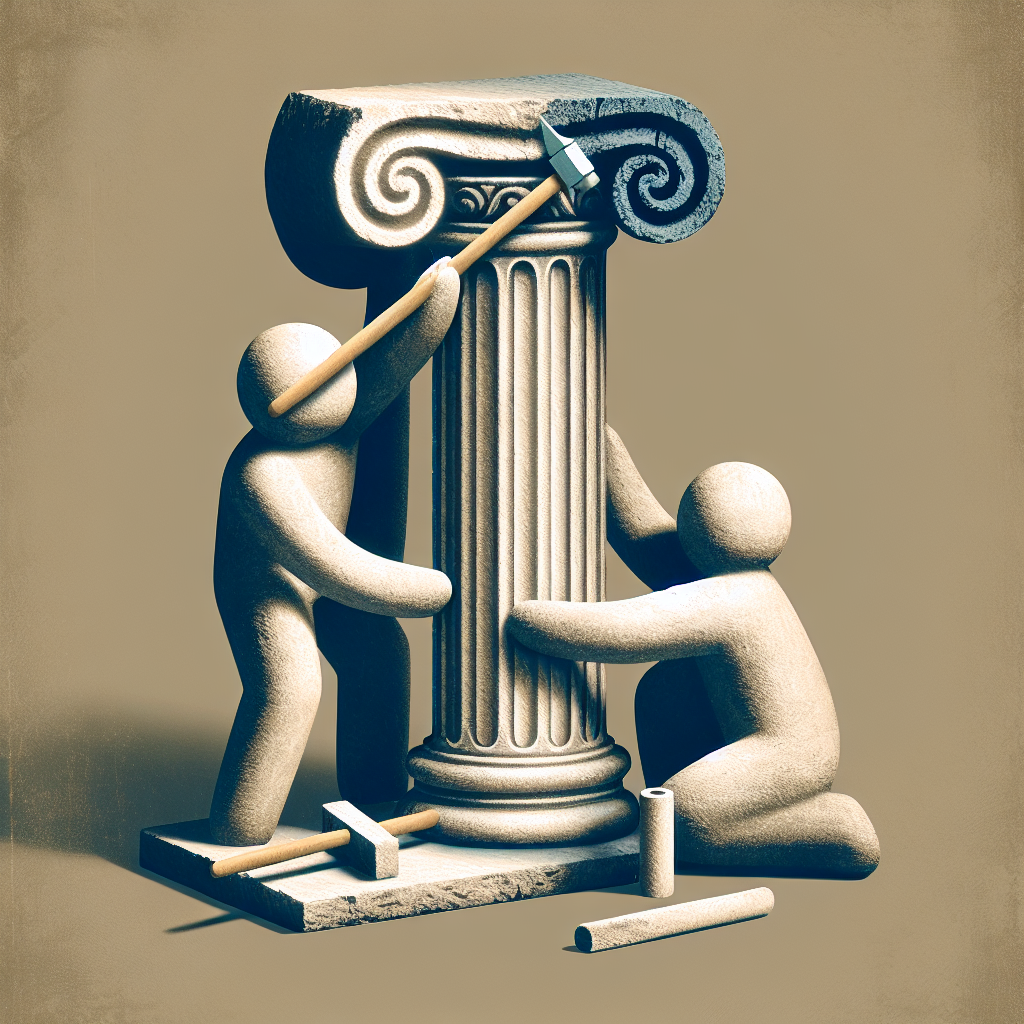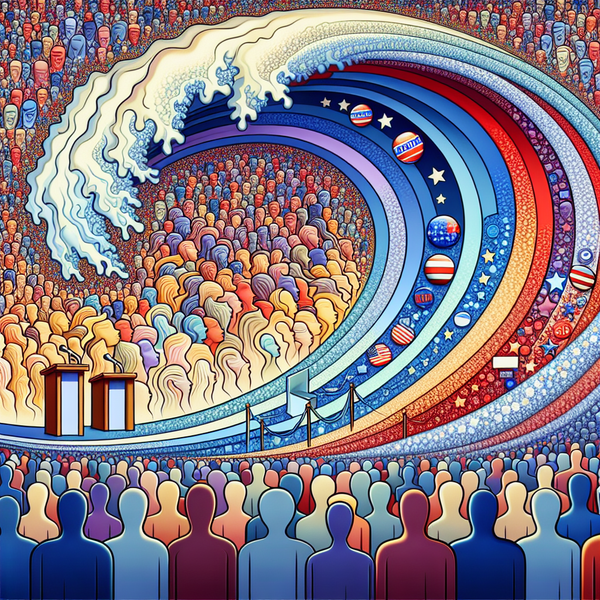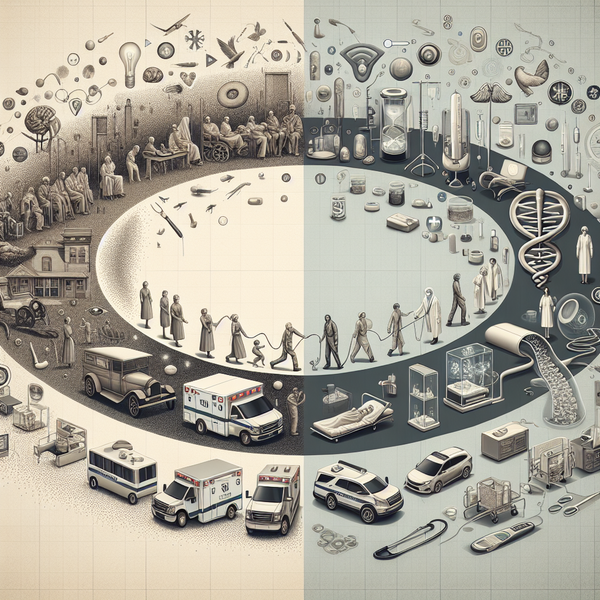Column | Trump tries to fix

Unraveling the Methods of Trump's Problem-Solving Strategies
Over his presidential term, Donald Trump, the 45th President of the United States, adopted unconventional techniques to tackle key issues that spanned across healthcare, immigration, and economic policies. This blog post dives deep into a multifaceted analysis of Trump's distinctive approaches toward problem-solving. As he spearheaded his ambitious campaign of "Making America Great Again," Trump grappled with vital matters, engineered bold solutions, and faced an evenly balanced scale of critique and acclaim. This article endeavors to offer a neutral evaluation of his strategies while shedding light on the enduring legacy of his presidency.
Trump’s Problem-Solving Philosophy
Trump’s worldview and leadership style were deeply rooted in his business background. He frequently emphasized the power of instinct over academic expertise, dismissing conventional policymaking in favor of decisive, bold moves. Unlike previous presidents who sought compromise and collaboration, Trump often framed issues in binary terms: success versus failure, winning versus losing. This mindset shaped his administration’s tactics and set the tone for how he approached national and international challenges.
— Susan Glasser, political analyst (The New Yorker)
He surrounded himself with individuals he perceived as loyal and business-minded, sometimes at the expense of institutional experience. Trump viewed bureaucracy as an obstacle rather than a safeguard and pushed for rapid execution of his agenda. His disdain for lengthy deliberation often manifested in executive orders and swift reversals of previous policies.
Key Domains of Application
Economic Policy
One of Trump’s hallmark areas of action was economic reform. His administration prioritized corporate tax cuts, deregulation, and renegotiation of international trade agreements. The Tax Cuts and Jobs Act of 2017 reduced the corporate tax rate from 35% to 21%, with the promise of economic growth and job creation. Supporters credited this move with bolstering the stock market and encouraging domestic investment.
However, critics pointed out that wage growth remained sluggish, and wealth disparity continued to grow. Deregulatory efforts, especially in environmental protections and financial regulations, were applauded by business groups but raised concerns about long-term sustainability and consumer protection.
Immigration Policy
Trump's approach to immigration was one of the most polarizing aspects of his presidency. He championed the construction of a wall along the southern border, enacted the controversial travel ban on several Muslim-majority countries, and sought to dismantle the Deferred Action for Childhood Arrivals (DACA) program.
These moves were grounded in his belief that national security and economic opportunity were being compromised by illegal immigration. While his administration succeeded in reducing certain forms of immigration, it also faced widespread criticism for inhumane conditions at detention centers, family separations, and legal challenges in federal courts.
Healthcare Reform
From the outset, Trump sought to repeal and replace the Affordable Care Act (ACA), commonly known as Obamacare. While full repeal efforts failed in Congress, his administration succeeded in eliminating the individual mandate penalty and expanding short-term health insurance plans.
While these changes were lauded by some conservatives as steps toward personal freedom and reduced federal intervention, healthcare experts warned that millions of Americans lost coverage or faced rising premiums, especially those with pre-existing conditions.
Case Studies in Detail
North Korea Diplomacy
Perhaps one of Trump’s most unprecedented diplomatic efforts was his approach to North Korea. Instead of relying solely on sanctions and isolation, Trump pursued direct engagement with North Korean leader Kim Jong-un. The two leaders met three times, breaking decades of U.S. foreign policy precedent.
While no concrete denuclearization agreement was reached, and subsequent talks faltered, these summits temporarily reduced tensions and kept diplomatic channels open. Supporters praised Trump’s courage to engage with adversaries, while critics argued that the meetings legitimized an authoritarian regime with few tangible results.
Trade War with China
Trump’s aggressive trade strategy was exemplified by the imposition of tariffs on hundreds of billions of dollars in Chinese goods. The aim was to reduce the trade deficit, punish unfair practices, and pressure Beijing into structural reforms.
While some domestic industries benefited from protective tariffs, others—especially agriculture—suffered retaliation. U.S. farmers received billions in subsidies to offset losses, and economists debated whether the tariffs achieved their intended goals or simply escalated global trade tensions.
COVID-19 Pandemic Response
The global coronavirus pandemic became a defining crisis of Trump's presidency. Early travel bans and Operation Warp Speed—his initiative to fast-track vaccine development—were praised as proactive steps. The U.S. ultimately produced multiple effective vaccines in record time.
However, the administration’s inconsistent messaging, politicization of masks, and conflicts with public health officials undermined confidence. The U.S. recorded among the highest case and death totals globally. Trump's reluctance to support long-term lockdowns or federally coordinated responses attracted both support for protecting the economy and criticism for underestimating the public health impact.
Comparison to Previous Presidents
Trump’s approach to problem-solving stands in stark contrast to that of his predecessors. Barack Obama, for example, often favored intellectual deliberation, consensus-building, and multilateralism. His solutions were typically cautious, incremental, and driven by a desire to uphold international norms. George W. Bush, while more assertive post-9/11, still operated largely within institutional frameworks and relied heavily on advisors and party alignment.
Trump, by comparison, bypassed traditional processes in favor of intuition and speed. He distrusted experts, preferred direct orders to committee-led decisions, and often reversed long-standing policies with a tweet. This style earned him admiration from those who believed prior presidents were too slow or politically correct—but alarmed others who saw his tactics as erratic and risky.
— Daniel Ziblatt, Harvard political scientist
His disregard for political norms, in many ways, rewrote the script for presidential behavior. Where Obama used rhetorical finesse, Trump opted for provocative soundbites. Where Bush relied on coalitions, Trump embraced unilateralism. These distinctions underline how unprecedented Trump's methods were—and why their impact is still being debated today.
Influence on Future Leadership Styles
Whether admired or condemned, Trump’s problem-solving legacy has left a lasting impression on how future leaders may approach governance. His unapologetic style emboldened a generation of populist politicians around the world, from Brazil to Hungary, who adopted similar tactics: direct communication with citizens, anti-media narratives, and nationalistic rhetoric.
Within the United States, both parties have begun to adopt faster, more visually-driven, and emotion-oriented methods of policy communication. Political branding—once subtle—is now overt. Trump's approach to framing every issue as a battle resonated with many Americans and has reshaped how campaigns are run, how opponents are treated, and how issues are framed.
More subtly, future presidents may feel empowered to test the limits of executive authority, citing Trump’s precedents. While institutional safeguards remain strong, norms—unwritten rules—have been weakened. Trump's methods may have permanently altered the balance between the executive branch and other pillars of American democracy.
Domestic and International Reactions
Trump’s unconventional problem-solving tactics drew starkly divided reactions within the United States. His core supporters viewed his actions as necessary disruptions to a stagnant political system. They applauded his blunt communication style, economic focus, and strong stance on national security.
Conversely, his critics—spanning Democrats, independents, and some Republicans—accused him of eroding democratic norms, fostering division, and weakening key institutions. The media landscape became more polarized than ever, often mirroring the split in public sentiment. Internationally, allies were frequently caught off-guard by abrupt decisions—such as the withdrawal from the Paris Climate Agreement or the Iran Nuclear Deal—while adversaries sought to exploit perceived inconsistencies in U.S. policy.
In the diplomatic realm, traditional allies like Germany, Canada, and NATO partners expressed concern about the reliability of U.S. commitments. At the same time, Trump’s transactional approach led to new dialogues with nations like North Korea and spurred renegotiations of trade agreements such as NAFTA, replaced by the USMCA.
Measuring the Long-Term Impact
Quantifying the long-term success of Trump’s problem-solving efforts remains a contentious task. On one hand, the administration achieved record-low unemployment rates before the pandemic, reshaped the judiciary, and brought deregulation to levels not seen in decades. On the other hand, the volatile nature of policy rollouts, the lack of consensus-building, and the deepening of societal polarization have sparked ongoing debate among scholars, economists, and historians.
Environmental rollbacks and relaxed corporate oversight may have short-term business benefits, but their future costs—both ecological and financial—remain uncertain. The erosion of traditional norms in executive conduct and public communication has arguably left a lasting mark on the presidency itself.
Evaluating Trump’s Problem-Solving Legacy
Trump’s problem-solving legacy is as complex as it is consequential. His presidency challenged assumptions about what leadership should look like and introduced a new brand of governance: fast, forceful, and fiercely loyal to his base. This style energized millions but also alienated many, setting the stage for a new era of political identity in America.
— David Frum, former White House speechwriter
Supporters credit him with shaking up the status quo, prioritizing American interests, and confronting issues others had long ignored. Detractors warn that his legacy includes weakened institutions, reduced global trust, and heightened domestic discord. One certainty remains: Trump's presidency will be studied for generations as a watershed moment in modern American politics.
Conclusion
Donald Trump’s tenure as President of the United States redefined the boundaries of presidential behavior, decision-making, and political communication. His problem-solving strategies—rooted in instinct, disruption, and directness—left few areas of American life untouched. Whether viewed as bold or reckless, effective or destabilizing, his legacy is inextricably tied to the methods he employed.
As the country continues to grapple with the long-term effects of his administration, the evaluation of Trump’s presidency will likely remain as polarized and passionate as the man himself. In examining his problem-solving tactics, we not only gain insight into his time in office but also into the evolving nature of leadership in the 21st century.
❓ Frequently Asked Questions
What made Trump’s problem-solving style unique?
Trump favored speed, instinct, and disruption over traditional deliberation or expert consensus. His methods often prioritized short-term impact and media visibility.
📚 Read more on Investopedia
How did Trump approach economic challenges?
He implemented tax cuts, rolled back regulations, and pushed aggressive trade policies—especially targeting China.
📈 Analysis by Forbes
Was his healthcare policy effective?
He partially dismantled Obamacare but failed to pass a full replacement. Millions remained in uncertain coverage.
💡 Perspective from Health Affairs
How did international allies view his strategies?
Many allies were skeptical of his unpredictability and unilateral actions, particularly in NATO and climate policy.
🌍 See more on Foreign Policy
Did Trump’s trade war with China succeed?
It reduced certain dependencies but also triggered tariffs and retaliations that hurt U.S. farmers and industries.
📰 In-depth from Brookings
How did Trump use social media in his problem-solving?
He bypassed mainstream media and communicated directly via platforms like Twitter, influencing both policy and public opinion.
📱 TechCrunch coverage
What lessons do future leaders draw from Trump?
His presidency showed that rule-breaking can energize bases, but also carries high risks for institutional stability.
📊 Leadership analysis
Will Trump’s style define future presidencies?
Likely yes—in communication strategy and campaign tactics. But institutions may resist extreme centralization of power.
🔍 NYT editorial overview



